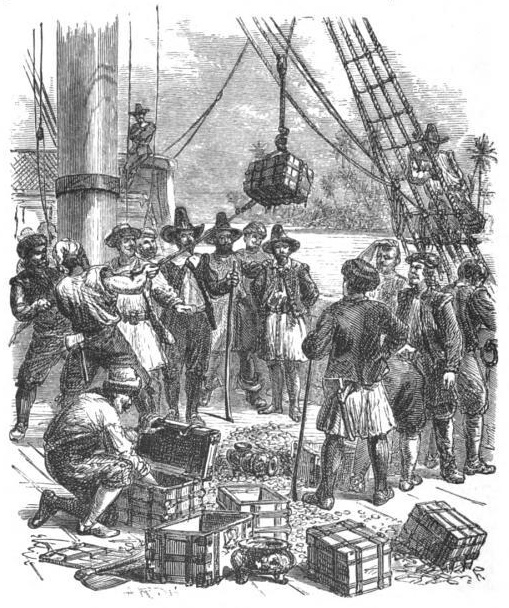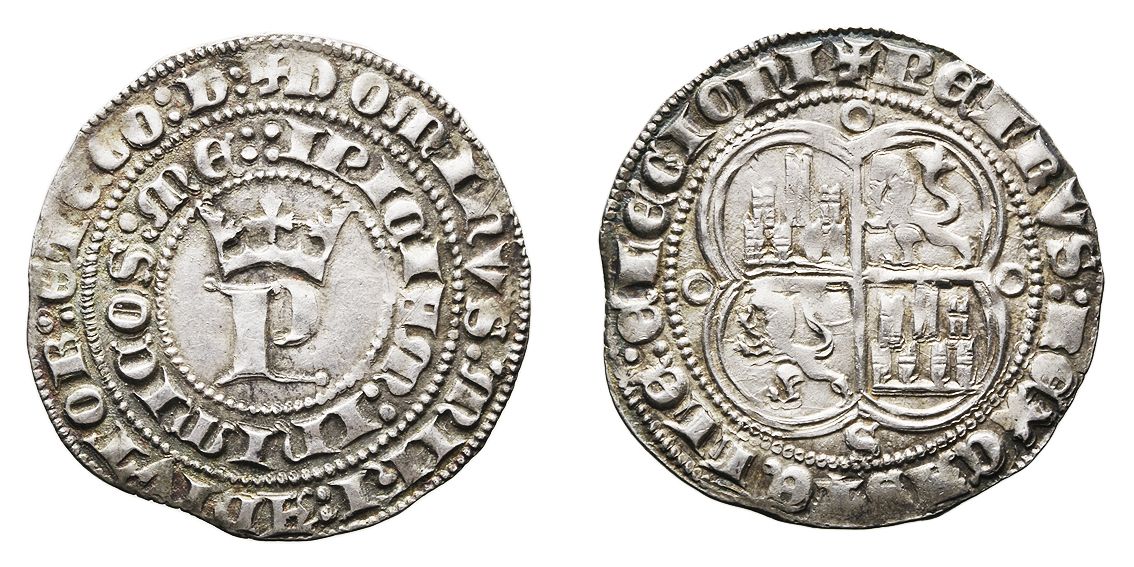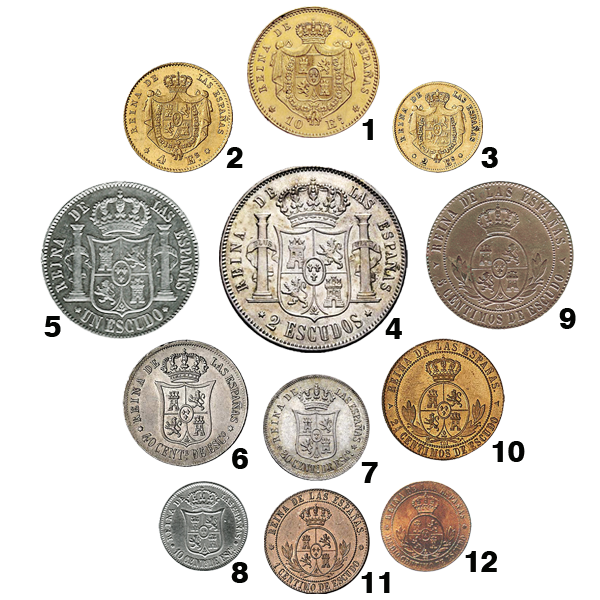|
Brent Brisben
Brent W. Brisben (born March 20, 1968) is an American treasure hunter best known for salvaging the shipwrecks of the historic 1715 Treasure Fleet, a Spanish treasure fleet returning from the New World to Spain. During the early morning hours of July 31, 1715, seven days after departing from Havana, Cuba, eleven of the twelve ships of this fleet were lost in a hurricane near present-day Vero Beach, Florida. Because the fleet was carrying silver, it is also known as the 1715 Plate Fleet (plata being the Spanish word for silver plate). Some artifacts and even coins still wash up on Florida beaches from time to time. Personal life Brent Brisben was born and raised in Montgomery, Ohio, a suburb of Cincinnati. He graduated from Archbishop Moeller High School in 1986 and was a member of Moeller's 1985 state championship football team. After high school, Brisben attended the University of Cincinnati where he studied communications. Brisben worked as a sports producer at WCPO-TV in Cincinnat ... [...More Info...] [...Related Items...] OR: [Wikipedia] [Google] [Baidu] |
1715 Treasure Fleet
The 1715 Treasure Fleet was actually a combination of two Spanish treasure fleets returning from the New World to Spain, the "Nueva España Fleet", under Capt.-General Don Juan Esteban de Ubilla, and the "Tierra Firme Fleet", under Don Antonio de Echeverz y Zubiza. At two in the morning on Wednesday, July 31, 1715, seven days after departing from Havana, Cuba, all eleven ships of the fleet were lost in a hurricane along the east coast of Florida. A 12th ship, the French frigate "Le Grifon", had sailed with the fleet. Its captain was unfamiliar with the Florida coastline and elected to stay further out to sea. The "Grifon" safely returned to Europe. Because the fleet was carrying silver, it is also known as the 1715 Plate Fleet (''plata'' being the Spanish word for silver). Some artifacts and even coins still wash up on Florida beaches from time to time. According to Cuban records, around 1,500 sailors perished while a small number survived in lifeboats. Many ships, including pirate ... [...More Info...] [...Related Items...] OR: [Wikipedia] [Google] [Baidu] |
University Of Cincinnati
The University of Cincinnati (UC or Cincinnati) is a public research university in Cincinnati, Ohio. Founded in 1819 as Cincinnati College, it is the oldest institution of higher education in Cincinnati and has an annual enrollment of over 44,000 students, making it the second largest university in Ohio. It is part of the University System of Ohio. The university has four major campuses, with Cincinnati's main uptown campus and medical campus in the Heights and Corryville neighborhoods, and branch campuses in Batavia and Blue Ash, Ohio. The university has 14 constituent colleges, with programs in architecture, business, education, engineering, humanities, the sciences, law, music, and medicine. The medical college includes a leading teaching hospital and several biomedical research laboratories, with developments made including a live polio vaccine and diphenhydramine. UC was also the first university to implement a co-operative education (co-op) model. The university is accre ... [...More Info...] [...Related Items...] OR: [Wikipedia] [Google] [Baidu] |
1968 Births
The year was highlighted by protests and other unrests that occurred worldwide. Events January–February * January 5 – " Prague Spring": Alexander Dubček is chosen as leader of the Communist Party of Czechoslovakia. * January 10 – John Gorton is sworn in as 19th Prime Minister of Australia, taking over from John McEwen after being elected leader of the Liberal Party the previous day, following the disappearance of Harold Holt. Gorton becomes the only Senator to become Prime Minister, though he immediately transfers to the House of Representatives through the 1968 Higgins by-election in Holt's vacant seat. * January 15 – The 1968 Belice earthquake in Sicily kills 380 and injures around 1,000. * January 21 ** Vietnam War: Battle of Khe Sanh – One of the most publicized and controversial battles of the war begins, ending on April 8. ** 1968 Thule Air Base B-52 crash: A U.S. B-52 Stratofortress crashes in Greenland, discharging 4 nuclear bombs. * ... [...More Info...] [...Related Items...] OR: [Wikipedia] [Google] [Baidu] |
Living People
Related categories * :Year of birth missing (living people) / :Year of birth unknown * :Date of birth missing (living people) / :Date of birth unknown * :Place of birth missing (living people) / :Place of birth unknown * :Year of death missing / :Year of death unknown * :Date of death missing / :Date of death unknown * :Place of death missing / :Place of death unknown * :Missing middle or first names See also * :Dead people * :Template:L, which generates this category or death years, and birth year and sort keys. : {{DEFAULTSORT:Living people 21st-century people People by status ... [...More Info...] [...Related Items...] OR: [Wikipedia] [Google] [Baidu] |
Treasure Hunters
Treasure hunter is the physical search for treasure. For example, treasure hunters try to find sunken shipwrecks and retrieve artifacts with market value. This industry is generally fueled by the market for antiquities. The practice of treasure-hunting can be controversial, as locations such as sunken wrecks or cultural sites may be protected by national or international law concerned with property ownership, marine salvage, sovereign or state vessels, commercial diving regulations, protection of cultural heritage and trade controls. Treasure hunting can also refer to geocaching a sport in which participants use GPS units to find hidden caches of toys or trinkets, or various other treasure-hunting games. History In 1643, Massachusetts treasure hunter Sir William Phips salvaged a sunken Spanish treasure ship which had been wrecked on the Ambrosia Bank in 1599. The total worth of the treasures salvaged came in at £205,536. The ''Nuestra Señora de Atocha'' left Havana ... [...More Info...] [...Related Items...] OR: [Wikipedia] [Google] [Baidu] |
1715 Royal
Events For dates within Great Britain and the British Empire, as well as in the Russian Empire, the "old style" Julian calendar was used in 1715, and can be converted to the "new style" Gregorian calendar (adopted in the British Empire in 1752 and in Russia in 1923) by adding 11 days. January–March * January 13 – A fire in London, described by some as the worst since the Great Fire of London (1666) almost 50 years earlier, starts on Thames Street when fireworks prematurely explode "in the house of Mr. Walker, an oil man"; more than 100 houses are consumed in the blaze, which continues over to Tower Street before it is controlled. * January 22 – Voting begins for the British House of Commons and continues for the next 46 days in different constituencies on different days. * February 11 – Tuscarora War: The Tuscarora and their allies sign a peace treaty with the Province of North Carolina, and agree to move to a reservation near Lake Mattamuske ... [...More Info...] [...Related Items...] OR: [Wikipedia] [Google] [Baidu] |
Spanish Real
The ''real'' (English: /ɹeɪˈɑl/ Spanish: /reˈal/) (meaning: "royal", plural: ''reales'') was a unit of currency in Spain for several centuries after the mid-14th century. It underwent several changes in value relative to other units throughout its lifetime until it was replaced by the '' peseta'' in 1868. The most common denomination for the currency was the silver eight-''real'' Spanish dollar (''Real de a 8'') or peso which was used throughout Europe, America and Asia during the height of the Spanish Empire. History In Spain and Spanish America The first real was introduced by King Pedro I of Castile in the mid 14th century, with 66 minted from a ''Castilian mark'' of silver (230.0465 grams) in a fineness of (0.9306), and valued of 3 ''maravedíes''. It circulated beside various other silver coins until a 1497 ordinance eliminated all other coins and retained the real (now minted 67 to a mark of silver, 0.9306 fine, fine silver of 3.195 grams) subdivided into 34 ... [...More Info...] [...Related Items...] OR: [Wikipedia] [Google] [Baidu] |
Spanish Escudo
The escudo was either of two distinct Spanish currency denominations. Gold escudo The first escudo was a gold coin introduced in 1535/1537, with coins denominated in escudos issued until 1833. It was initially worth 16 '' reales''. When different reales were introduced, the escudo became worth 16 ''reales de plata'' in 1642, then 16 ''reales de plata fuerte'' or 40 ''reales de vellón'' from 1737. Coins Gold coins were issued in denominations of , 1, 2, 4 and 8 escudos, with the 2 escudos coin known as the doubloon. Between 1809 and 1849, coins denominated as 80, 160 and 320 reales (de vellon) were issued, equivalent, in gold content and value, to the 2, 4 and 8 escudo coins. Most were minted in Madrid, marked with a superscripted M or in Seville bearing an S below and left of the Royal Coat of Arms. The mintmaster's initials appeared on the opposite side. Silver escudo The second escudo was the currency of Spain between 1864 and 1869. It was subdivided into 100 ''céntimos de ... [...More Info...] [...Related Items...] OR: [Wikipedia] [Google] [Baidu] |
Mel Fisher
Mel Fisher (August 21, 1922 – December 19, 1998) was an American treasure hunter best known for finding the 1622 wreck of the ''Nuestra Señora de Atocha'' in Florida waters. Personal life Fisher was an Indiana-born former chicken farmer who eventually moved to California. He opened the first diving shop in the state, it was called "See Da Sea". He attended Purdue University and was a member of the Delta Chi (ΔΧ) Fraternity. In 1953, he married Dolores (Deo) Horton who became his business partner. She was one of the first women to learn how to dive and set a women's record by staying underwater for 50 hours. Mel and Deo had five children: sons Terry, Dirk, Kim and Kane, and daughter Taffi. On July 20, 1975 Mel's oldest son Dirk, his wife Angel, and diver Rick Gage died after their boat sank due to bilge pump failure during their quest for treasure. Mel ventured through decades treasure hunting in the Florida Keys with the motto ''Today's the Day''. The Atocha Fisher found th ... [...More Info...] [...Related Items...] OR: [Wikipedia] [Google] [Baidu] |
WCPO-TV
WCPO-TV (channel 9) is a television station in Cincinnati, Ohio, United States, affiliated with ABC. It is the flagship television property of locally based E. W. Scripps Company, which has owned the station since its inception. WCPO-TV's studios are located in the Mount Adams neighborhood of Cincinnati next to the Elsinore Arch, and its transmitter is located in the Mount Auburn section of the city. History Early history The station first signed on the air at noon ET on July 26, 1949, and the first face seen was Big Jim Stacey. Originally operating on VHF channel 7, it was Cincinnati's third television station. The call letters came from ''The Cincinnati Post'', who also owned WCPO radio (1230 AM, now WDBZ and 105.1 FM, now WUBE). The station was then owned by Scripps-Howard Newspapers. [...More Info...] [...Related Items...] OR: [Wikipedia] [Google] [Baidu] |
High School
A secondary school describes an institution that provides secondary education and also usually includes the building where this takes place. Some secondary schools provide both '' lower secondary education'' (ages 11 to 14) and ''upper secondary education'' (ages 14 to 18), i.e., both levels 2 and 3 of the ISCED scale, but these can also be provided in separate schools. In the US, the secondary education system has separate middle schools and high schools. In the UK, most state schools and privately-funded schools accommodate pupils between the ages of 11–16 or 11–18; some UK private schools, i.e. public schools, admit pupils between the ages of 13 and 18. Secondary schools follow on from primary schools and prepare for vocational or tertiary education. Attendance is usually compulsory for students until age 16. The organisations, buildings, and terminology are more or less unique in each country. Levels of education In the ISCED 2011 education scale levels 2 and 3 c ... [...More Info...] [...Related Items...] OR: [Wikipedia] [Google] [Baidu] |
Spanish Treasure Fleet
The Spanish treasure fleet, or West Indies Fleet ( es, Flota de Indias, also called silver fleet or plate fleet; from the es, label=Spanish, plata meaning "silver"), was a convoy system of sea routes organized by the Spanish Empire from 1566 to 1790, which linked Spain with its territories in the Americas across the Atlantic. The convoys were general purpose cargo fleets used for transporting a wide variety of items, including agricultural goods, lumber, various metal resources such as silver and gold, gems, pearls, spices, sugar, tobacco, silk, and other exotic goods from the overseas territories of the Spanish Empire to the Spanish mainland. Spanish goods such as oil, wine, textiles, books and tools were transported in the opposite direction. The West Indies fleet was the first permanent transatlantic trade route in history. Similarly, the related Manila galleon trade was the first permanent trade route across the Pacific. The Spanish West and East Indies fleets are considered ... [...More Info...] [...Related Items...] OR: [Wikipedia] [Google] [Baidu] |









